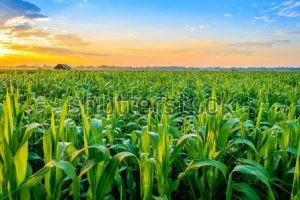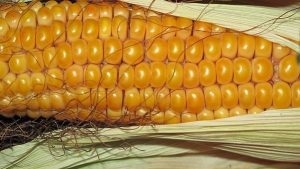High fructose corn syrup (HFCS) has received a lot of bad press over the last few years. What is it and why has this happened? HFCS is a mixture of 2 or more simple (monosacharide) sugars. While there are several formulations, a typical mixture is 45% glucose and 55% fructose. Table sugar has the molecular form of a “double sugar” (disaccharide) and consists of one fructose molecule physically attached to one glucose molecule. This is 50-50 mix of fructose and glucose. HFCS consists of 5% more fructose so why all the bad press? Table sugar received the bad press first. Consumer groups started to publish the sugar content of foods popular with children. Then a few other factors came into play. First with farm subsidies to grow corn in the 1980’s, there was a surplus of corn so the price drops. Next, new extraction methods allowed the cornstarch to be converted to sugars and extracted from the kernels. This video gives an overview of that process.
Table sugar received the bad press first. Consumer groups started to publish the sugar content of foods popular with children. Then a few other factors came into play. First with farm subsidies to grow corn in the 1980’s, there was a surplus of corn so the price drops. Next, new extraction methods allowed the cornstarch to be converted to sugars and extracted from the kernels. This video gives an overview of that process.
The price of HFCS becomes lower than table sugar. Manufacturers have an acceptable substitute for table sugar at a lower price. Combine this with the new consumer demand for “low sugar” or “reduced sugar” products enabled manufacturers to move table sugar down the list of ingredients while HFCS was quietly added. Prices remain the same but with lower priced ingredients profits rise.
Twenty year later it is hard to find a processed product on a supermarket shelf that does not contain HFCS. Since it is lower in cost and can be used as a replacement for table sugar it is being used as such in baked goods, breads, breakfast cereals and other packaged products.
For a consumer it is important to realize that you are being marketed to every time you go to make a purchase. This includes not only the advertisements you see but the printing on the labels as well. Food manufactures understand that health sells and will first focus group the product and then label and package it in a way that they believe you will see as nutritious and healthy. When table sugar was seen as unhealthy, HFCS appeared. It was less expensive, not seen as unhealthy, and soon blended in under the guise of “reduced sugar” and "low fat." It is important to realize that they are for all practical purposes the same thing! Other ingredients that are sugar by another name include but are not limited to molasses, agave syrup, corn syrup, and pure cane sugar. A product that is labeled 100% natural or contains honey, maple syrup, or even organic sugar is still sugar. Your body handles them the same way as conventional sugars. It is best to avoid all of them.
Many products, notably breakfast cereals, will split their sweeteners among several different forms of sugars for the sole purpose of not listing sugar or HFCS as the first or second ingredient. Combine this with the fact that all cereals regardless of whether they are made from corn, rice, or wheat flour break down into glucose and when it is all added up, sugar is not listed as the number one ingredient but is the number one way your body sees and handles that product. This applies to whole grain cereals as well as their refined grain counterparts.
As a dentist, I see this sugar consumption resulting in higher levels of tooth decay, especially in children. Right now in the United States it is a major cause of our epidemic of obesity and diabetes. HFCS is the least expensive form of sugar so that is what is in most sweetened products on supermarket shelves. Since it is a simple sugar it is rapidly absorbed. It then has a two-pronged attack contributing to these problems. First, the glucose raises insulin levels, which drives fat storage. Second, as I have written before, the fructose can only be metabolized in the liver. This overloads the liver and also drives fat storage.
What is a well-meaning consumer to do? First realize that corn is a genetically modified crop. This means it has been treated with a high pesticide level. Next know that HFCS is a highly processed product. Not something humans are meant to consume in any measurable quantities. It is not enough to avoid products containing HFCS. The pendulum is swinging back the other way. Products are appearing that say “no high fructose corn syrup.” Always remember you are being marketed to! If you read the label carefully you will most likely see one of the other forms of sugar. Very often these are just the same products only reformulated with either “organic sugar, or “just a touch of pure cane sugar” in the list of ingredients. I say avoid all of them. A diet rich in whole foods such as avocados, coconut, and seasonal fruits is a good start. They are all tasty foods that are free of HFCS, low in sugar and make a tasty breakfast. A little bit of planning will go a long way in protecting and optimizing you and your family’s health.
